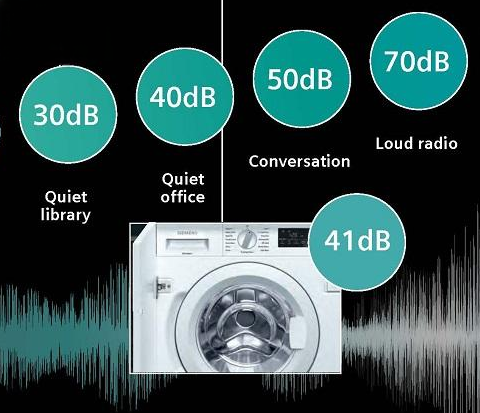Thanksgiving Special - Buy one component* and get additional components at 25% off! Offer ends Dec. 4. We are closed 11/27 and 11/28. Reopening Monday 12/1.
Thanksgiving Special - Buy one component* and get additional components at 25% off! Offer ends Dec. 4. We are closed 11/27 and 11/28. Reopening Monday 12/1.
Is Your Mic-Pre Clean Past 30 kHz?
by Benchmark Media Systems January 01, 2000

By Allen H. Burdick
Who Should Care?
You Should Care!
High-Frequency Intermodulation Distortion is a Critical Mic-Pre Parameter!
The mic-pre function is one of the most difficult challenges facing the audio engineer. A mic-pre is often the limiting factor in the audio chain. When selecting a mic-pre, everyone looks for great specifications, along with some magic, that will set their recordings apart from the crowd. Overall, the technology of low noise amplifiers has progressed superbly during the past 30 years from warm, but noisy, tube amplifiers, through the harsh sound of the early discrete transistor amplifiers, to the relatively clean op-amp designs of today.
One electronic element that has historically been a part of almost every mic-pre design is the input transformer. We have listened to preamplifiers with transformers so long and so often that we've been educated to expect the sound of iron without even realizing it! When we listen to a truly clean transformerless mic-preamp we often say that something is missing in the low end. And, of course, we're right! What's missing is the distortion generated by the non-linear core of the transformer. The engineers at WGBH-FM in Boston are among those with time to do extensive listening, and who possess the best in both types of mic-preamp systems. They have been able to make the long term comparisons everyone wishes they could. Now that their ears are re-educated, they consistently pick the clean amplifiers for their recordings.
But "clean" does not only come from the absence of iron and nickel. High frequency intermodulation (IM) distortion can also ruin otherwise good performance in a mic-pre. Essentially, all distortion is caused when signals are passed through a non-linear element. Harmonic distortion and intermodulation distortion are both created by the same mechanism. This may be a narrowband amplifier, an amplifier that is slew rate limited, or an intrinsically flawed design element in the amplifier, such as the output stage. At low frequencies, the large amount of feedback in today's audio amplifier elements all but eliminates distortion products. However, at high frequencies the intrinsic gain of an amplifier element is significantly reduced and therefore the percentage of gain available for use in feedback becomes severely limited. Excellent high frequency performance requires a careful use of wide bandwidth, intrinsically clean circuit elements, and the proper amount of feedback.
High frequency IM distortion can result from two significant sources in a mic-pre. The first is intermodulation between genuine high frequency audio signals that are present from the source, such as the sounds from a triangle, rich in harmonics. The late Deane Jensen measured significant energy from cymbals out past 30 kHz. If your mic-pre can't properly amplify those signals, the intermodulation products that reflect back into the normal audio band will be most unpleasant.
The second source, and perhaps the most pernicious, is that of RF induced IM distortion. This is a result of 1) amplifier stages that have not been protected from strong external RF signals, and 2) from a lack of proper feedback compensation which allows the amplifier to intersect its open loop gain curve. When this occurs in the presence of RF, the amplifier becomes non-linear and intermittent IM distortion is the result. And intermittent it often is. A product may measure well on the bench, but when placed into a system or when taken into the field, users may find that its performance is far less than stellar. Here at Benchmark, we are convinced that most of the "bite", "edge", and otherwise undesirable characteristics of many amplifier designs are a result of poor RF immunity. RF causes non-linearity to create new, unexpected, and unwanted audio signals from the incoming audio. And whether you want it or not, this new extra audio comes free with most mic-preamps! To achieve truly clean audio at 30 kHz, the 3 dB bandwidth should extend past at least 200 kHz and still be RF stable. This is no trivial task!
Who should care? At Benchmark, we care! We have created "clean" with a very careful transformerless design. The Benchmark MPS-420 has wideband - 500 kHz for outstanding performance at 30+ kHz; flawless square wave response - a powerful measure of RF stability; and a common mode filter that removes RF from the microphone input line. RF protection has been accomplished without limiting the bandwidth, without degrading the 1 dB noise figure, (see the "Noise Primer" in "A Clean Audio Installation Guide™") and, most notably, without compromising the distortion performance. See the 100 kHz DIM, and the CCIF twin tone IM sweeps.
Still want "warm" (2nd harmonic distortion)? Fine. Keep a good tube mike, an Aphex® Aural Processor, or a tube compressor in your bag of tricks. That way, YOU are in control. But don't settle for high frequency IMD that comes free. The cost is too high: it eliminates the magic!
Also in Audio Application Notes

How Loud is the Distortion from Your Power Amplifier?
by John Siau August 08, 2025
Would you put a Washing Machine in your Listening Room?
If the answer is no, you may be surprised to discover that the distortion produced by your power amplifier may be louder than the noise produced by a major appliance.
Don't believe me? Take a look at Stereophile's test reports:
We selected 7 power amplifiers from Stereophile's top list of recommended amplifiers.
We took Stereophile's "THD+N vs. Power" plots for each, and replotted the data in a format that shows the loudness of the THD+N at the listening position.
The results are shocking!
Amplifier THD+N is louder than expected!
The distortion from your amplifier may be louder than a washing machine on the spin cycle, or it may be totally silent. How does yours perform? The answer is hidden in Stereophile's THD+N plots.
This application note reveals the hidden truth:
"The Distortion from your Power Amplifier may be Louder than a Washing Machine!"
I know, it sounds crazy, but this is what the measurements show!

Interpolator Overload Distortion
by John Siau November 20, 2024
Most digital playback devices include digital interpolators. These interpolators increase the sample rate of the incoming audio to improve the performance of the playback system. Interpolators are essential in oversampled sigma-delta D/A converters, and in sample rate converters. In general, interpolators have vastly improved the performance of audio D/A converters by eliminating the need for analog brick wall filters. Nevertheless, digital interpolators have brick wall digital filters that can produce unique distortion signatures when they are overloaded.
10% Distortion
An interpolator that performs wonderfully when tested with standard test tones, may overload severely when playing the inter-sample musical peaks that are captured on a typical CD. In our tests, we observed THD+N levels exceeding 10% while interpolator overloads were occurring. The highest levels were produced by devices that included ASRC sample rate converters.

Audiophile Snake Oil
by John Siau April 05, 2024
The Audiophile Wild West
Audiophiles live in the wild west. $495 will buy an "audiophile fuse" to replace the $1 generic fuse that came in your audio amplifier. $10,000 will buy a set of "audiophile speaker cables" to replace the $20 wires you purchased at the local hardware store. We are told that these $10,000 cables can be improved if we add a set of $300 "cable elevators" to dampen vibrations. You didn't even know that you needed elevators! And let's not forget to budget at least $200 for each of the "isolation platforms" we will need under our electronic components. Furthermore, it seems that any so-called "audiophile power cord" that costs less than $100, does not belong in a high-end system. And, if cost is no object, there are premium versions of each that can be purchased by the most discerning customers. A top-of-the line power cord could run $5000. One magazine claims that "the majority of listeners were able to hear the difference between a $5 power cable and a $5,000 power cord". Can you hear the difference? If not, are you really an audiophile?

